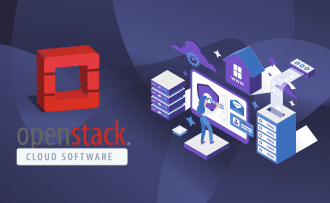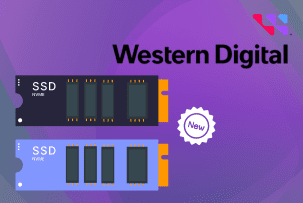TOGAF in the Context of Data Architecture
10:20, 30.01.2024
We live in an extremely competitive environment where missing some data means losing your success and influence on the market. Businesses are investing in all the possible tools in order to increase profitability, and at the same time, they are struggling with searching for the needed data. So, data architecture can help businesses reach new opportunities.
Of course, most businesses are okay with their current position, and may not even experience a sort of technical struggles. However, from our professional experience, we can assure you that any company has some limitations that stop it from reaching its full potential. To get this higher level of success, it is better to follow several protocols.
Data Architecture is highly important nowadays because it helps with finding critical data for specific purposes at the needed time. Easy visualization of the collected data and mapping is a major necessity for any business to achieve specific goals. Generally, the usage of data architecture can elevate your digital experience and make the whole process more enjoyable and simpler.
Unpacking Data Architecture with TOGAF
The Open Group Architecture Framework or TOGAF is one of the most used methods for developing architecture within the enterprise. This framework is ideal for big corporations rather than for small companies. It provides a detailed method for maintaining and developing enterprise architecture.
This reliable and practical method provides tools and methodology for enterprise architecture and it also relates to the data architecture. This approach towards the data architecture can be divided into such areas: gap analysis, data management, data governance, and business vision.
Exploring Key Dimensions of Data Architecture
Let’s discuss each of these categories in detail so that you will have a broader understanding of Data architecture via TOGAF.
1. Envisioning Business Goals
The main point of utilizing the data architecture is for the development of a better vision of the delivered business values. To get clear business goals, the data should be received from the correct resource and ideally without any manual intervention.
General business vision is determined by the architecture standards and policies. The requirements and needs of companies are important when defining the scope of the data architecture. For instance, this data architecture scope may be limited by the KPI of various business-related activities.
2. Navigating Data Management
The effective usage of any available data is only possible when it is well-structured and comprehensive. That’s why, it is highly advisable to understand how the data management work and its major principles. So, let’s begin with the purpose of the data management:
- Determining where and how the elements of data are created, reported, and stored.
- Determining the usage of the data elements for services, business functions, and processes.
- Determining the complexity of data conversion in order to exchange it between the apps.
- Determining whether specific information is related to the transactional, reference, or master data.
- Determining needed software for the ideal integration with all the customers.
To get deeper into the process of data management let’s review some of the main aspects such as data modeling and presses data mapping.
Data modeling is applied to analyze and define the data requirements in order to support the processes within the company. There are 3 variants of data models that are usually used in most of the systems. They are the following:
- Conceptual model of data. This is the initial model where stakeholders and other involved experts discuss the requirements and criteria they may have relating to the specific issue or problem. In this model, all the details about the issues are mentioned and their correlation with data management.
- Logical model of data. This is the second step after the conceptual one. This is a more practical recommendation that includes an actual structure of the information that should be used in the databases. In some situations, one conceptual model can lead to the creation of several logical ones.
- Physical model of data. The last step in the modeling process is the physical one. It is responsible for organizing all the information according to the tables, determining the accounts for accessing this data, and also storage details. Modeling specifies not only the actual elements of the data, but also its structure, and relationship between the elements.
When speaking about the process of data mapping, is a visual depiction of all the steps within the process. Usually, the processes are mapped with symbols, charts, and flowcharts so that by reviewing them, everyone can get an understanding of the major tasks, who is responsible for their completion, and when each task should be finished.
In most organizations, these two processes (modeling and mapping) are used interchangeably and there is no huge difference between them. Mapping can be done literary anywhere on the board/paper. While business modeling is done with the help of software so that it may be immediately automated. Both of these processes are important for businesses because they create corporate clarity, better compliance with standards, and more systematic control over the existing processes.
3. Understanding Data Governance
Data governance is a set of policies, processes, metrics, standards, and roles that guarantee the effective usage of the information in order to achieve the company’s goals. The processes are established in such a way that data security and quality are ensured. With data governance, the company defines who is responsible for certain actions, when they will be conducted, with what data, situation, and which methods will be used.
The purpose of governance is the following:
- Determine the elements of data for the business process management.
- Determine the required standards and the structure of the organization for data management.
- Specify the roles and skills of the employees for the transformation of the data.
- Determine archival requirements and controller.
Ownership
Now let’s discuss some of the main elements of data governance. The initial one to talk about is ownership. Each company has a huge variability of the data types, and with technological growth, this number is increasing. For the regulation of the data management, the ownership has been given to the business function.
Initially, the data was shared between processes. For instance, financial information has been used in finance and sales, product information has been available for production and research, and so on.
Today lots of innovations in the business sphere created a cross-functional approach to all the available processes. The data transversality is a source of innovations. Most companies sooner or later come to the conclusion that data sharing with other organizations can be really beneficial. For instance, the usage of artificial intelligence has been extremely effective for lots of businesses that bother about data architecture. Now companies can easily detect the clients’ behaviors by using AI.
Security
The major chunk of information is usually easily accessible by all team members and that simplifies the workflow. However, some sensitive information should have limited access. That’s why, it is better to specialize the access to some data in order to secure the system. Access control will be especially important for the financial information, but not only.
The level of security can be increased by the implementation of the users’ permission. Such permissions give the companies the possibility to control not only the data access but also access to the processes and specific content.
Life-Cycle
Data has a specific life cycle because it is not static. That’s why, it is really important to model the full life cycle that consists of creation, usage, re-usage, obsolescence, and elimination. The understanding of this process can save much time.
To start data governance in the company, it is needed to evaluate and rely on the business processes that already are in the organization. For instance, it can be related to the risk management procedures within the company or the data entry usage.
In such a way, there are used certain documentation for recording all the activities that need data usage within the company. This process is a standardized one and most companies do have it in order to manage everything more effectively. For instance, any bank client will need to share personal details to receive a credit card.
4. Conducting Gap Analysis
Gap analysis within the data architecture is a kind of measurement that is needed to identify the missing technologies, processes, and more. The results of this analysis should include specific planning to achieve business goals.
By actually comparing recent situations with the target ones, the businesses can easily specify where they are moving to and what should be changed in order to reach specific results. Gap analysis can evaluate not only the whole organization but also individual teams within this company. So, that can bring really practical recommendations.
The process of analysis is straightforward. At first, it will be needed to determine the area which should be evaluated. The next step generalizes the ideal outcome and specifies the goals to reach. Then actual analysis takes place and comparison with this goal. The process is completed with the actual plan of how to minimize this gap.
In big companies, the responsibility of conducting this analysis lies on project managers, business analysts, management or improvement teams. However, there may not even be such a person in your team, but with short training and well-designed templates, any employee can work with this process successfully.
Here are real steps to follow in order to create a relevant gap analysis for your business:
- Determine the area that should be analyzed and goals to reach. For instance, the company has implemented TOGAF in the data architecture, but still, there are some minor issues connected with the team learning process. The goals here will specify the time frame and some recommendations according to the implementation of some additional training.
- Specify the ideal scenario. In case everything works out, what exact value it will bring to the company?
- Analyze the recent situation. Here it will be needed to specify why the team is not fully using the new approach.
- Comparison of the recent situation and the ideal one.
- Characterize this gap and specify the exact differences.
- Create a plan to minimize this gap.
To Sum Up
TOGAF is an awesome framework for the data architecture. It can guide huge organizations toward their success. TOGAF helps companies manage and design how all the data-related processes are applied and integrated within the needed solutions. It offers principles, practices, and best techniques that really function. So, if you were searching for a perfect framework, you now know where to start from.
FAQ
What do the three architectural model types entail?
Three models that are highly valuable for businesses related to TOGAF in software, business, and data architecture. This popular model is used for already outlined principles, practices, and processes. The business models help with the strategy improvement, and the software model orients towards the IT changes.
What are the three tiers of data architecture?
When you mention “data”, you already understand how structural it should be, and there are 3 important levels in the data architecture. The conceptual level determines the general requirements and specifies where this data comes from. The logical level actually determines the needed frameworks and technologies. Physical determines the storage of the data for instance whether the company is selecting databases, cloud servers, hardware config, and so on.
What makes TOGAF stand out as a premier enterprise architecture framework?
TOGAF is a standardized framework that suits perfectly for enterprise architecture. This framework has organized methods for the division of the data so that the management will be also more effective. This system offers practical recommendations that relate to designing, planning, managing, and implementing. The pluses of its usage are obvious, organizations are getting better performance, higher agility, and a modified process of decision-making. Moreover, organizations are saving money and time and what is more importantly effort when using TOGAF.


